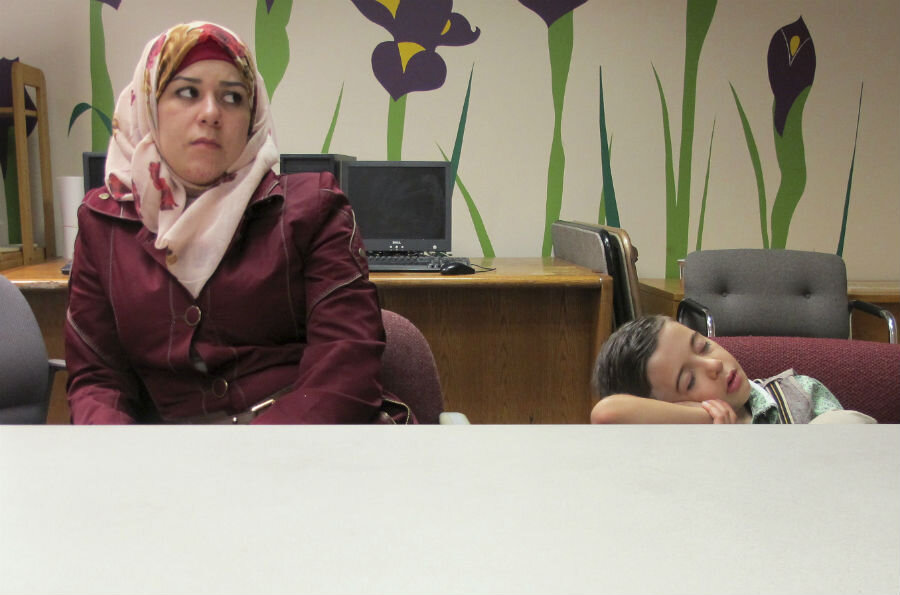How the US vets Syrian refugees
Loading...
Last year, President Obama set a goal of admitting 10,000 Syrian refugees. He exceeded that by 25 percent.
When the 2016 fiscal year ended on Sept. 30, some 12,587 Syrians had been admitted to the United States – more than seven times the number who came in FY2015. That’s according to a report from the Refugee Processing Center, an online database used by the State Department to track total arrivals.
Mr. Obama last week said that the US has spent $4.5 billion on humanitarian aid for those affected by the Syrian conflict – more than any other country – and he pledged to increase the number of Syrians the US admits in the coming year. "We have a moral responsibility to do what we can for families forced from their homes," he said.
Hillary Clinton has said if she becomes president, she will raise the quota to 65,000. But Donald Trump has claimed that there is no vetting process for Syrian refugees, or at least not a robust enough one to guarantee against infiltration by potential terrorists.
In fact, the Obama administration’s vetting is quite extensive.
The process, confirmed by Monitor reporting, includes in-person interviews conducted by the Department of Homeland Security and the State Department. They then coordinate with intelligence agencies, who cross-check applicants with a series of databases, including biometric records.
In order to help meet Obama’s goal of accepting 10,000 Syrians, processing time was reportedly reduced from 18 to 24 months to just three months. But the administration says there have been no shortcuts, just “processing enhancements” – including expanded processing capabilities in Amman, Jordan.
But there is a significant caveat to the vetting process: US intelligence agencies have very few records or intel to cross-check applicants against, since Syria is in such disarray.
“The concern in Syria is that we don’t have systems in places on the ground to collect information to vet,” Federal Bureau of Investigation Assistant Director Michael Steinbach told Congress last year. “You’re talking about a country that is a failed state, that does not have any infrastructure, so to speak. So all of the datasets – the police, the intel services – that normally you would go to to seek information doesn’t exist.”
With Iraqi refugees, for example, there was a great deal more information because of America’s involvement there since 2003. Yet two Iraqi refugees admitted to the US in 2009 – Waad Ramadan Alwan and Mohanad Shareef Hammadi – who had ties to terrorist organizations were able to slip through. (They were sentenced to 40 years and life in prison, respectively, in 2013.)
What’s less clear is whether terrorist groups have made an organized effort to get their operatives through settling them as refugees.
“We’ve certainly seen terrorist groups talk about, think about, … trying to use available programs to get people not only into the United States, but also into Western European countries as well. So we know that they aspire to that,” said Nicholas Rasmussen, head of the Counterterrorism Center, in another hearing before Congress late last year. But he added, “I don’t know that I would go so far as to say that they are likely to succeed.”
Many Americans say it’s not in keeping with American humanitarian principles to keep out masses of innocent Syrians out of fear that a few may have ill intentions. The US has taken in relatively few of the 12 million people displaced by that conflict, whereas Germany has absorbed more than a million.
Mark Krikorian, executive director of the “low-immigration, pro-immigrant” Center for Immigration Studies in Washington, has a different take.
By CIS’s calculations, the US spends as much on one Syrian refugee as it would cost to pay for 12 refugees living in the Middle East.
“The goal of making us more secure by trying to limit threats through the refugee flow does not conflict with our humanitarian goal of helping people,” he says.








